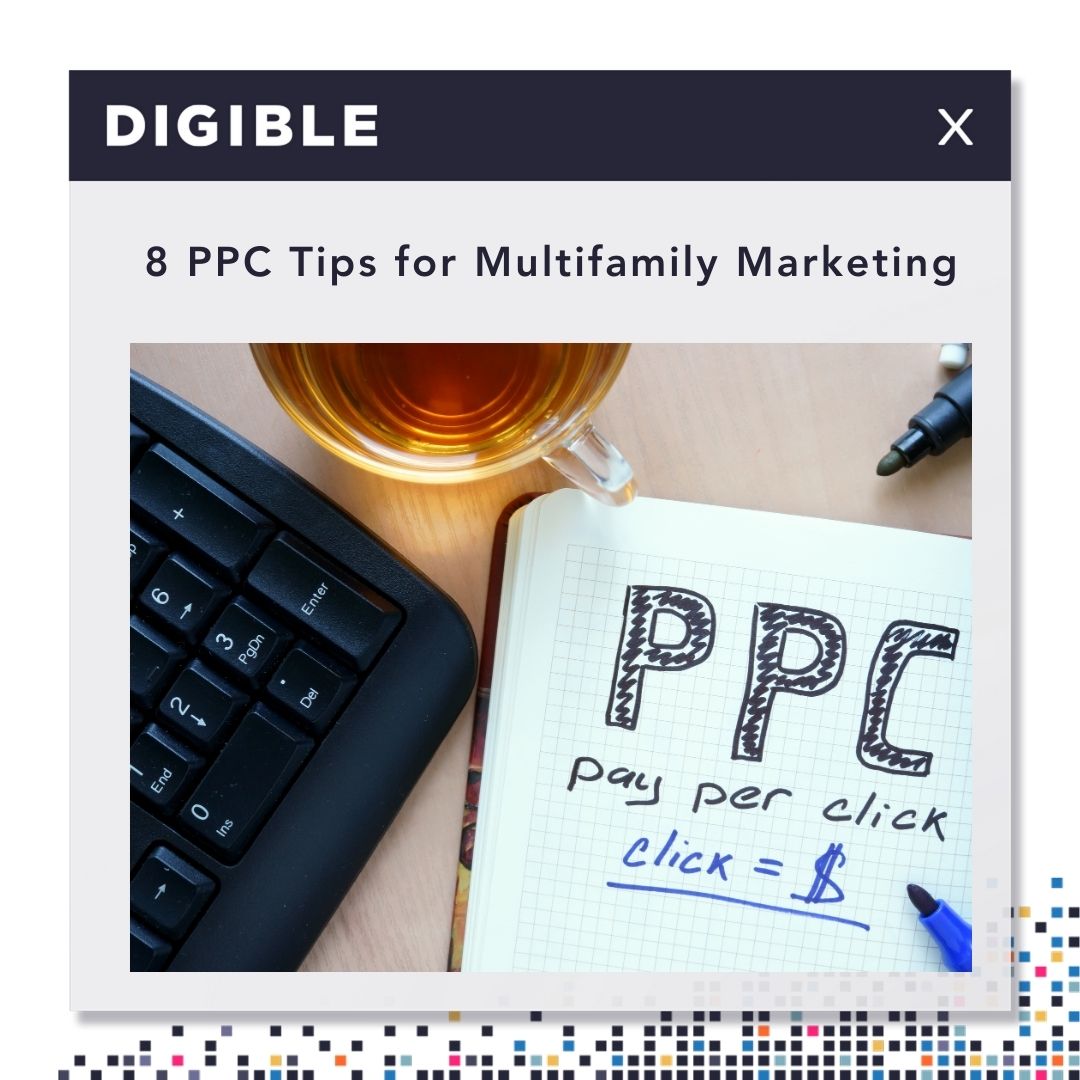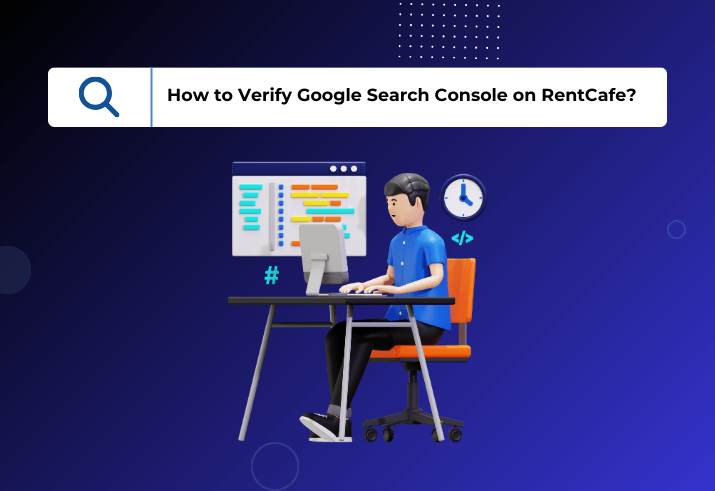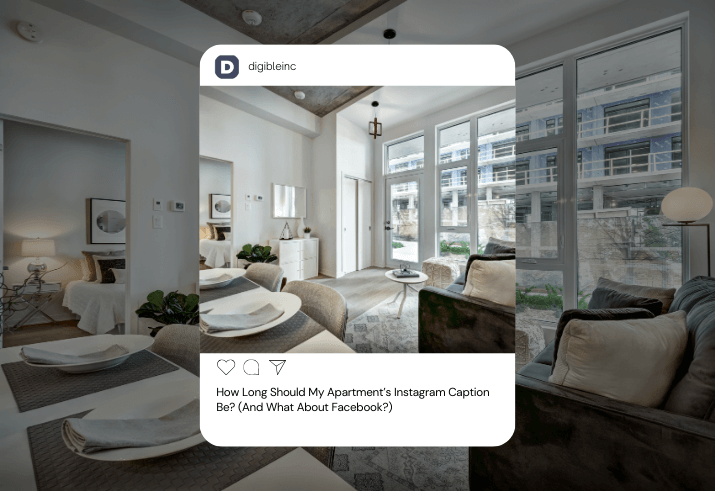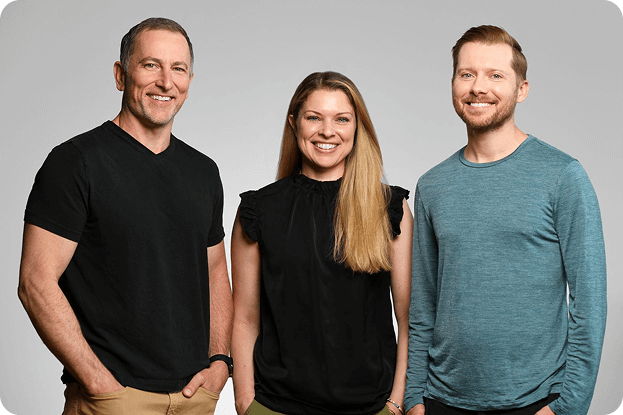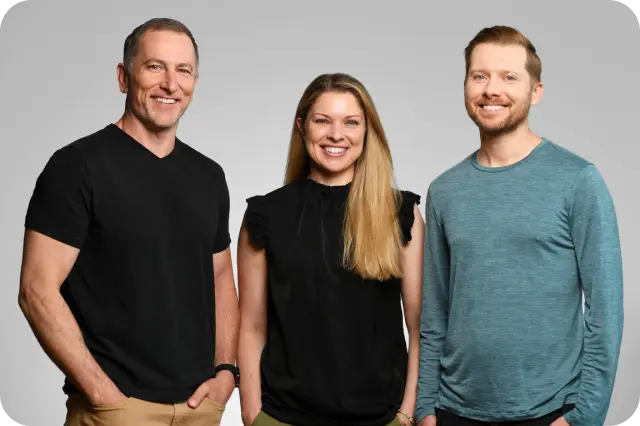8 PPC Tips for Multifamily Marketing
Digital marketing is an ever-changing landscape. The advice that was relevant yesterday can often be tired tomorrow, as elements like AI, privacy regulations, and advertiser updates lead to a shift in best practices. It’s not all doom and gloom though! Certain pieces of advice always remain relevant, no matter how tangled the pay-per-click landscape can become.
As a leader in the multifamily marketing space, Digible works on connecting people with apartments and homes for rent every day, whether those homes are luxury apartments in Seattle or 55+ communities in Florida. Our skilled team – or motley crew, as we sometimes call them – of digital marketers are experts in optimizing campaigns across a multitude of markets and platforms, handling dozens of accounts each day. In other words, we’re an extension of your team.
Here are eight tips from the Digible team on how to keep your multifamily advertising campaigns in peak condition.
Keep Track of What’s Most Important in PPC
Take Full Advantage of Ads
If you’re paying Google, Meta, or Microsoft for clicks, then you should make sure you’re getting the most out of every ad you’re running. Exact limits will vary from platform to platform, but all advertisers allow up to a certain number of headlines, images, descriptions, and more. For example, Google Ads lets advertisers add up to 15 headlines to each individual search ad, while Facebook Advertisements allow up to 5 descriptions for their single image ads. Over-exposure is bad for business. Anybody can think of an ad they’ve seen on TV too many times. If you only run 1 or 2 headlines for your ads, you run the risk of fatiguing your potential customers and making them less interested in your apartment community as they see the same content over and over again. Digible recommends making full use of what each ad platform gives you. Variety is the spice of digital advertising. Or life. Or something.
Use Assets and Extensions
When we say use everything at your disposal, we mean it! Platforms like Google allow for a wide variety of extensions, everything from phone numbers to image addresses to logos. Some of these will be more relevant for multifamily advertisers than others. For example, luxury apartments may find it helpful to list their amenities in a callout extension, but few apartment communities have a unique app available for download. Just remember that the end goal of these advertisements is to get people to your website! Laying every detail out via extensions and assets won’t help you get additional web traffic. Making sure that you have a full suite of assets can be time-consuming, so Digible recommends using tools like Google Ads Editor to keep on top of it all.
Don’t Neglect Audiences
Marketing is all about putting the right content in front of the right person at the right time. While Fair Housing places reasonable restrictions on targeting certain audiences there is still room to refine your audiences further and make sure you’re connecting with the right people to meet your needs. Both Google and Meta offer affinity audiences, audiences made up of people who are passionate about certain interests. Luxury properties may wish to target people who enjoy luxury shopping or driving sports cars. Meanwhile, single-family rental properties may wish to target affinities like an appreciation for family television or people who are planning trips to theme parks. Take advantage of the targeting that works within Fair Housing and make sure your ads are appearing in front of the right people.

Check Your Target Audience
Using affinity audiences is one way to target the right people, but geography can also play a big role. Fair Housing restricts targeting specific zip codes when advertising rental properties, so Digible recommends setting a radius around your property’s address instead. The best radius lies in the Goldilocks zone – not too small, but not too big. Dense urban areas may be able to use a smaller radius, while properties in more rural communities could need to cast a wide net. It’s also a good idea to leverage Google Analytics and see where your traffic is coming from. A 55+ community in Southern California could reap major benefits from targeting Portland, OR, or Spokane, WA, for example, as people look to retire in warmer climates.
Update Ad-Copy Regularly
At the end of the day, you want to make sure you’re putting the right information out there into the world. If all of your two-bedroom apartments are fully leased, the last thing you want is ten phone calls from people looking for two-bedroom units while your studio apartments sit empty. Regular updates to ad copy can help make sure you’re getting the right kind of interest. Switching out images on social advertisements is also a great idea. If you’ve recently remodeled your apartments, then make sure people can see it. The same principle applies here in terms of over-exposure. Even with a full set of headlines and images, content is bound to repeat. Keep it fresh!
But Not Too Regularly
Believe it or not, there is a thing called being too fresh. Think of updating your ads the same way you would picking fruit. If you pick a berry before its time, it’s not going to taste very good. Platforms like Google operate on machine learning. It’s an in-depth topic, but the simple explanation is that, as your ads run, Google is tracking performance and seeing what works best. If you have two headlines, they each show up ten times, but one headline gets eight clicks compared to two, Google will prioritize that headline. By changing copy too quickly, shifting keywords, or frequently updating images, you may be hurting your campaigns. It’s better to pick them when they’re ripe. Detailing how often is too often would take an entire post on its own, so we’ll just say this: remember to be patient. Great results can take time.
Seasonal Shifts in Multifamily
PPC Prep for Multifamily





